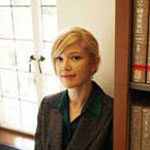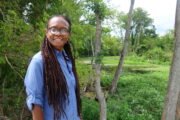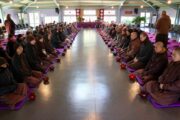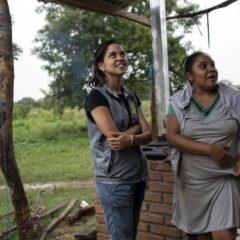CRCC’s interdisciplinary group of researchers held its first seminar on Friday, Oct. 8, 2010. This session featured Professor Heather White (New College of Florida) and Professor Sheila Briggs (USC). White’s paper, “‘An Illness and Not Something to be Judged Morally’: Homosexuality, Pastoral Counseling, and the Postwar Therapeutic Ethos,” explored how “mainline Protestant ministers contributed, at times inadvertently, to the ideological unraveling of the dominant opprobrium against homosexuality” (10). Briggs’ paper, “Technology, Gender, and Early Christian Communities,” argued that early Christian views of female domesticity allowed and even encouraged women’s active participation in technical forms of labor that did not involve cooking, sewing, or other productive activities later associated with femininity.
Unfortunately, the limits of time prevented us from exploring, during the seminar itself, fruitful avenues of comparison between the two papers. Admittedly, these papers situate themselves in disparate fields, and they are separated by one continent and nearly two thousand years. What larger lessons might we glean from their juxtaposition?
One commonality that struck me is that both papers remind us that we cannot locate a singular “Christian” or “biblical” view of gender or sexuality. Although this is a simple point, it is one worth reiterating, as we often find it tempting to employ conceptual metaphors that view religions as containers or as agents.* The first of these metaphors, religion-as-container, leads us to think of religious traditions as bound entities with static properties. When people ask me to speak on “the Buddhist view” of homosexuality, or “the Buddhist view” of abortion, for example, they are employing the first of these metaphors, forgetting that Buddhism does not have clear boundaries and that Buddhists throughout time and space have held a range of diverse views on particular issues. The second of these metaphors, religion-as-agent, encourages us to think of religious traditions as having agent-like qualities. I see this frequently when my students say things like “Buddhism believes in nirvana.” I have to remind them that religions are not clearly demarcated bodies that think or act independently of particular contexts and particular individuals.
In revealing Christian views of gender and sexuality that would surprise many contemporary Christians, White and Briggs remind us that it is unwise to generalize when describing Christian or even Protestant views of gender and sexuality. Let’s consider White’s paper first. As she explained on Friday, many are surprised to learn that liberal mainline Protestant ministers were among the first group of community leaders in postwar America to push for the reform of anti-sodomy laws and to help lessen the social stigma attached to homosexuality. People often assume, White explained, that mainline Protestant support for gay rights can be read as evidence of the church having succumbed to pressures from secular gay-rights organizing. As her careful study of pastoral counseling manuals reveals, mainline Protestant ministers actually helped pave the way—in the 1940s and 50s—for the secular gay rights organizing that would take place later, in the 1960s. Although these pastors ultimately viewed homosexuality as a disease that needed to be treated or at least hidden, the postwar rise of pastoral counseling encouraged pastors to reinterpret older Protestant assumptions and doctrines regarding the nature of sexuality. Her study thereby complicates our understanding of the relationship between American Protestantism and the gay rights movement.
Briggs’ paper challenges the notion that there is a longstanding Christian view of female domesticity that can be traced back to early Christian communities, or to biblical narratives. Against interpretations of Paul that link him to views of female domesticity that many now regard as “Christian”—namely, the idea that women’s activities should be focused on hearth and home—Briggs writes, “Acts finds nothing shameful in women . . . being associated with technical trades” (18). In other words, Paul approved of women who used their technical and intellectual skills to generate income, especially when that income could benefit fledging Christian communities. Briggs goes on to argue that economic power derived from participation in technological labor enabled many Christian women of the first century to “exercise leadership roles” (20). One cannot make the argument, then, that contemporary Christian ideologies of Christian female domesticity, especially those that see engagement with the technical trades as unfeminine, are rooted in early Christian communities. The dynamics shaping the ways in which Christians gender labor have changed drastically.
In the end, both papers remind us that it is impossible to speak of a primary Christian view of homosexuality or an original biblical view of women’s work. Through attention to the ways in which particular social, political, cultural, and economic forces have led particular Christian communities to promote particular views of gender and sexuality at particular points in history, we can begin to see the fluid and diverse nature of religious thinking about gender and sexuality, even within traditions that have advocated adherence to relatively limited textual canons.
NOTE: *For more on conceptual metaphors commonly used in thinking about religion, see Robert Ford Campany, “On the Very Idea of Religious (In the Modern West and in Early Medieval China,” in History of Religions 42.4 (2003), p. 12.
Lori Meeks is a guest contributor with the USC Center for Religion and Civic Culture.









